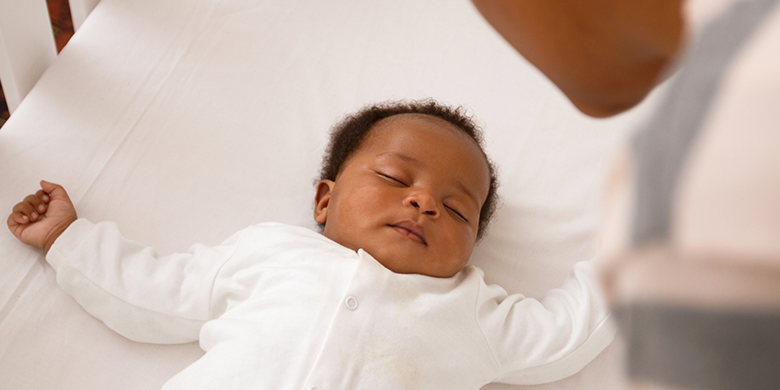The parent’s guide to safe sleep for infants
- Category: Family Birthing Center, Parenting, Family Medicine, Postpartum
- Posted On:

According to the American Academy of Pediatrics (AAP), more than 3,500 babies in the U.S. die each year while they’re sleeping. Even one death is too many. Protect your baby by practicing the basics of safe sleep for infants.
You keep a close eye while your baby is awake, but how can you ensure safety while your little one is sleeping? That’s a question that researchers have invested time and money into answering.
The result is a set of recommended practices for a safe sleep environment. Find all the details below.
Why safe sleep habits are important
In Louisiana, about 90 infants die unexpectedly each year. When a baby dies while sleeping, often it’s the result of sudden infant death syndrome (SIDS). Some deaths also occur due to accidental suffocation or strangulation.
The risk of sleep-related infant death is very real—and it’s something every parent and caretaker of an infant needs to understand. While practicing safe sleep habits can’t fully eliminate the risk of SIDS, it can greatly reduce the risk.
The safe way for babies to sleep
How can you make sure your baby is sleeping safely? It starts with where the baby sleeps.
Choose a safe sleep space. The Safe to Sleep® campaign says that a safe sleep surface should be firm, flat and level. Research shows that babies sleeping on soft surfaces are at a higher risk of SIDS. A safety-approved crib, bassinet or portable crib can all fit the bill, if they meet those three standards. If your little one falls asleep in a car seat or stroller, move him or her to a firm sleep surface when possible.
Clear out the crib. To prevent sleep-related infant deaths, keep the sleeping space clear of everything, except a fitted sheet. Bumper pads, blankets, pillows and stuffed animals are all no-no’s since they can cause suffocation.
Think back to sleep. Babies should be put to sleep on their backs during naps and at bedtime. Research has shown that babies sleeping in this position are at a lower risk of sudden death while sleeping. Until infants can roll back and forth on their own, reposition them to their backs if they roll to their stomachs after being put down to sleep.
Room share, but don’t bed share. The AAP doesn’t recommend bed sharing in any circumstances. It is safer when you’re in separate sleeping spaces. You want to be near your infant, though. The AAP recommends room sharing for at least the first six months. Putting your baby to sleep in a crib or bassinet near your bed can help lower the risk of SIDS by up to 50%.
Consider a sleep slack. Sleep sacks provide a safe way to keep your baby warm without the suffocation risk of blankets and other bedding. Avoid using weighted wearable blankets.
Beyond the safe sleep basics listed above, there is more you can do to lower your baby’s risk of sleep-related death. Believe it or not, breastfeeding can be one of your best defenses.
Research has shown that human milk provides some protection against SIDS. If it’s possible, provide your baby with breast milk exclusively until age 6 months and then with solid food until at least age 1.
Giving your baby a pacifier can also help lower the risk of SIDS. To eliminate the risk of strangulation, though, do not attach the pacifier to your baby in any way.
Finally, make sure your baby’s surroundings, including your home and your car, are smoke-free. Exposure to cigarette smoke, even during pregnancy, is a major risk factor for SIDS. If you smoke, now’s a great time to quit.
Moms and babies have special health needs. Receive one-of-a-kind care from our Women and Newborn team at East Jefferson General Hospital.